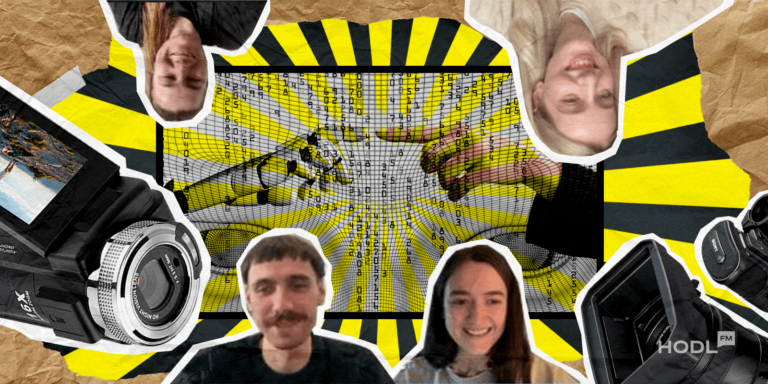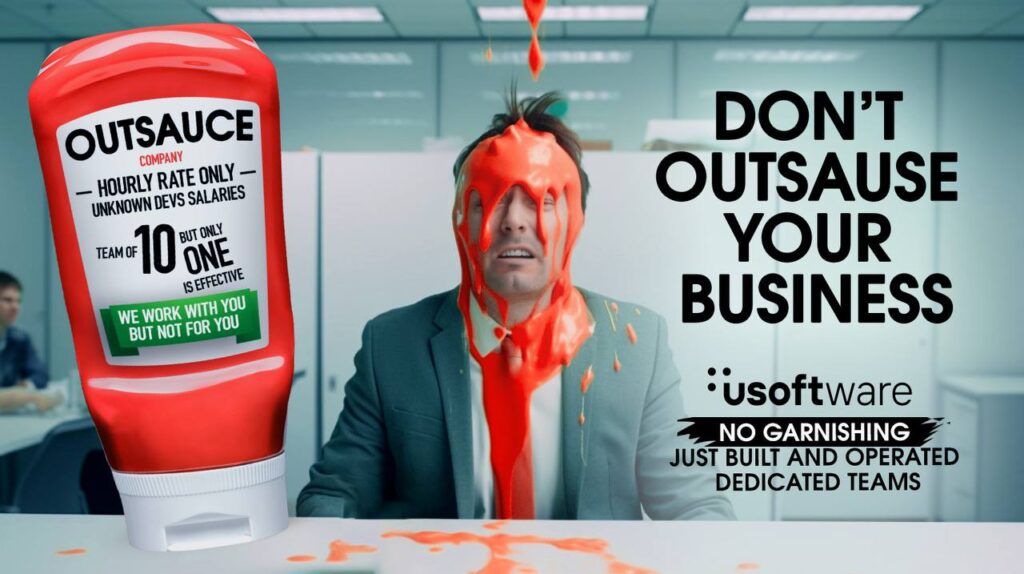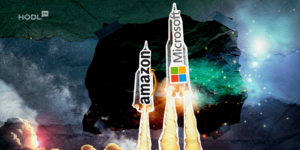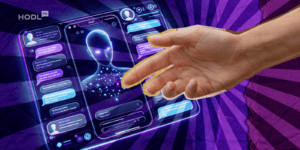Welcome to an interview series with and action, the team of storytelling wizards behind some of the most captivating video content in the industry. With their in-house video production and animation studio, and action has been crafting content for over nine year. From collaborating with global heavyweights like UNDP, TED-Ed, and 7-Eleven to creating scroll-stopping videos for brands like Comfy, Rozetka, and Planeta kino, and action is fearless in bringing visions to life.
In this interview, we will talk with the co-owners of and action agency – Khrystyna Boyko and Ivan Ishchenko and go into their journey into the world of artificial intelligence (AI) and how it has changed their approach to video creation.
Hi! Please introduce yourself and tell us a bit about you.
Khrystyna: Hi! My name is Khrystyna Boyko. I’m a co-owner and Business Development Representative at and action. Thank you so much for reaching out. We are thrilled and honored. I’ve also brought Ivan Ishchenko, my business partner and Creative Lead at and action, into the conversation because, essentially, everything started with him. He’s such a proponent and ambassador of AI solutions at and action. He often nudges us to try out various projects, trends, and innovations. I’m not much of an early adopter. I’m always a bit wary of the legal aspects. Ivan, on the other hand, is very hands-on and proactive, either doing things himself or delegating to the team, and he can elaborate on this further. We have a lot to showcase, including videos and behind-the-scenes glimpses of how everything comes together.
You’ve already shared a bit about yourselves, and we’re eager to hear more about and action overall: how did you start working, how did you begin incorporating artificial intelligence specifically, and what role did AI play for you? Do you plan to continue working with it in the future? What has your experience been like?
Khrystyna: and action is a video content agency with various directions. We’ve always been passionate about video creation. Over the past nine years, we’ve worked with a wide range of companies and organizations, including advertising and corporate communications for Comfy, Rozetka, Planeta Kino, 7-Eleven Hawaii, Upwork and many others.
We have a team of over twenty people, and we’re always on the lookout for interesting solutions. Our challenge is to create content that stops viewers from scrolling and effectively serves our clients’ needs.
We believe in the power of video, but the industry is constantly evolving. AI is undoubtedly the next step that we can’t ignore.
One significant development was our foray into frame-by-frame animation in Ukraine, which was relatively undeveloped at the time. This led to some of our most captivating ads and videos being in this style. We enjoy experimenting and seeing how this tool serves us.
Ivan: As Khrystyna mentioned, it was impossible to ignore AI. About a year ago, we started working with it, and it was quite overwhelming at first. There was so much happening around it. Working with AI felt like sifting through endless lists of materials in a general chat—it was challenging to figure out where to start.
When Khrystyna mentioned “scroll stopper,” it reminded me of how it all began for me. I was scrolling through Instagram, looking for inspiration, and stumbled upon some unconventional animation. I approached our frame-by-frame animator, Olya, and asked how it was done because it resembled frame-by-frame animation. She didn’t know, so I started researching and discovered stable diffusion, which is a code that uses a model trained on images to generate them. That’s when I realized this was the AI that had been around us. On YouTube, there weren’t many tutorials at the time, but I found Erik Winkowski, who often combines painting and craft techniques in animation, which intrigued me. I thought, “Wow, you can create something aesthetically pleasing rather than strange and wild.” I started experimenting, testing different techniques, and gradually incorporating other tools. Recently, we used four or five tools to create one image for a project with Comfy. We’ve done over ten projects using AI, always mixing different tools.
And about the future? I’m no expert, but it’s definitely exciting. It captivates me, as well as those who see the cool results. I believe it deserves a place in the future—it won’t be video or animation; it’ll be a different format visually. At least the results AI provides now have a distinct aesthetic.
Khrystyna: I’d like to add that, as I mentioned earlier, I’m not an early adopter, but I’m studying how these videos work from a marketing and communication perspective. It could simply be a tool. We don’t necessarily have to categorize it as a separate direction, like 3D animation or filming.
There are a lot of things grabbing attention right now because they look like something else. Let me give you an example of one of Apple’s ads from the past year. They have a small blend of filming and animation there. It’s stylish, cool, something unexpected. You’re curious to see how it’s done.
Similarly, concerning artificial intelligence, it doesn’t always have to be some pure solution. “Here’s what we did with artificial intelligence,” or “We only shoot on film.” It’s understood that there are people among us who strictly adhere to such clear frameworks. But we’re interested in combining and understanding where we benefit from using this tool and when it’s appropriate, and when there’s actually no need for it. It’s also cool that it’s a very general solution, and there’s no specific way. Everything here can be implemented differently.
Artificial intelligence is something that has become very common, and it’s true that it needs to be handled with care. That’s probably its biggest downside. What advantages has artificial intelligence brought to your work? Do you ever think that sometimes, it was better and more fun without it?
Ivan: Definitely not. I think it’s more fun with it. Even what Khrystyna mentioned – revising and improving, better than the suggested version. There’s some humor in that too.
What are the advantages? I highlight two main things – one is that you can get some atypical results. That’s the mistake we’re talking about. Artificial intelligence may not generate the perfect image for you; it might be a bit odd.
For example, let me tell you about a video from our bakery (I am also a bakery owner). We have a brownie with Maldon salt there. And I asked artificial intelligence to generate it, but also add cherries blooming on the sides because it was for April Fools’ Day and the beginning of spring. And what does it do? It turns the salt into flowers. And it’s like a mistake, but visually it looks very cool. I didn’t come up with this, it happened accidentally. And it turns out the brownie starts blooming. It looks simply fantastic. I really liked this effect.
So all the atypical things, as we see in 2D animation, stop-motion, animation, or video – they look unusual, and you notice them, you stop, you look at them.
Well, the second advantage is that you can talk about some time optimization and, accordingly, savings on something. In the case of our “Kefir Looks for a Spoon” project for the “Galichina” brand, we optimized the time for drawing backgrounds. We selected references from real Disney cartoons, anime, and Ukrainian cossacks. These are quite complex and voluminous things that an illustrator would spend three to four days to draw. And it’s usually boring and monotonous work that the illustrator doesn’t really like to do. So we decided to generate it using artificial intelligence to save time and effort.
A similar situation was in the project with Comfy, which we did together with Banda Agency. The references had a quite complex style, as it was very close to realism (Renaissance paintings were also there). And it was clear that you couldn’t even buy it on stocks because, for example, it was unreal to find an image of a merman. And we generated it using artificial intelligence, and we did everything in four weeks. Otherwise, we would probably have spent half a year on it.
Khrystyna: In addition to real results, we also use artificial intelligence to optimize our work processes. For example, we have a bot in our corporate chat that reminds us to log time since we have time tracking. Various simplifications in work – it’s not something brilliant, but it saves two to three minutes every day.
Anticipating the thesis that “artificial intelligence will take away jobs from people.” If you have a job that you don’t want to do just because you’re lazy, then, on the contrary, it’s cool that artificial intelligence will do it.
We had one experimental project, very bold communication, and the client seemed to like our idea, but this communication was quite provocative to his clients. And there are always two options – either this will become something very cool or turn into a failure. It was so on the edge that you don’t know if it will touch or offend. It was a company that is a competitor to an outsource company, and we decided to play with it using the English thesis “don’t hide it under the sauce.” When something is not funny, tasteless, or not good, you can pour sauce on it and serve it. And our idea was that when something is cool, you don’t need this sauce.
We developed a concept plan and called it ‘outsauсe’. And we needed a visual where the sauce pours over an office worker. Ivan created a key visual where there was a jar of this sauce, the image that he generated using artificial intelligence. Then, our clients sent this image to test to various representatives of their target audience and collected feedback.
Actually, firstly, it was very expensive or very difficult to simulate and shoot such a shot. If it were drawn by an illustrator, it would not look so realistic, but more toy-like. And here they saw with the help of artificial intelligence how it can look, and it gave the opportunity to make a quality test of the idea itself. Accordingly, the client saw how it can look, and when he was already confident in the idea, he went into production.
Or in another case, not to use this idea if it really received offensive feedback. And here there are also opportunities to test the idea and understand how well it can work.
Could you tell us about any challenges in using artificial intelligence or limitations? What can humans do that AI cannot, and vice versa?
Ivan: It’s like a joke, but there’s always an issue with fingers (laughs). Fingers have so many different variations in how they can be positioned. That’s why there can be so many of them in an image. Usually, we manually handle these things. For example, in the video for Comfy, in the mermaid fountain, there were also six fingers, so we took care of that ourselves.
Khrystyna: Of course, there’s the thing Ivan mentioned about fingers, but sometimes artificial intelligence creates very creepy or not very attractive people. Often, some tools sexualize women.
This definitely requires smart art direction. For now, I wouldn’t fully trust AI to create a video, visual, or something similar.
There are also legal limitations. We’ve discussed this a lot with colleagues in the market, that if they’re small companies, especially local ones, they can afford to test and make bold communication using AI.
If they’re international corporations, there are huge legal departments. Most likely, they don’t allow this because there are so many laws in different countries. For example, we always consult with our lawyers when we’re being creative and weigh the risks.
So the answer is – there are legal limitations, there are different ethical limitations. And here it’s important to understand whether the client is willing to take these risks if they’re engaging in some loud communication. In Ukraine, it’s still less regulated, whereas in the States, there’s a lot of regulation. You also have to be prepared for the fact that the industry is evolving, and the legal landscape is changing too. What’s allowed now may be restricted in a few months. So with AI, you have to be prepared that while you’re working on a project, legislation will change, and there may be additional liability. But there’s one solution.
Ivan: We always consult with our lawyers. When we do commercial projects, especially those that go on television, we describe the resources we use, they review them, and everything’s okay. In Ukraine, it’s very difficult to figure out how something was done. However, you can nitpick that a model was trained on something and it saw references from certain artists. So we came up with the idea that we can train the AI model purely on our own references. That way, it’ll be completely ours, and it will be harder to nitpick, at least in terms of intellectual property theft.
How did artificial intelligence influence the creative process and brainstorming?
Ivan: Well, personally, it inspires me a lot. It’s like I’ve stumbled upon something new that I didn’t know before. Everything new comes with challenges, it doesn’t work the first time, and that’s very exciting and motivating.
When we got the first order to use artificial intelligence in a video, I was overjoyed. It meant that it was no longer just an R&D laboratory, but something real. It fundamentally changed my attitude towards work.
As for the team? Well, it varies. Some are cautious with anything new. Some started incorporating AI into various stages of their usual workflow. Now, most of the key visuals and concept descriptions we do like this: we write a script, give it to AI, it generates a new version, we fix something again, pass it through some filter again, and we have a product. And then we can show it to the client in presentations.
It also affects the actual workflow. Often, generated images have their own atmosphere, aesthetics. We get inspired by this and sometimes try to reproduce something similar. Maybe we didn’t even try to do it, but it happens on a subconscious level.
Khrystyna: Overall, it’s interesting. Artificial intelligence has also created a new space, a new topic for small talks. Now clients come in, and instead of discussing the weather, they ask about where and how we used artificial intelligence. “How did you even do this? What did their lawyers say?” It’s a very interesting new topic to touch upon.
More Info on AI from Hodl.Fm:
- Musk Implanted a Chip in a Human Brain and The Patient Survived!
- The Strenght of AI: AstraZeneca’s Step Towards Conquering Cancer
- The Richest AI Billionaires
PART II IS COMING SOON. STAY TUNED!




